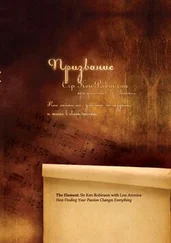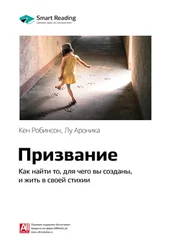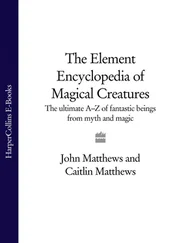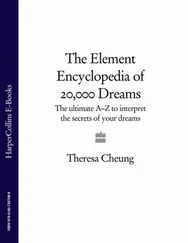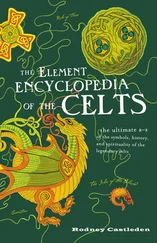Кен Робинсон - The Element
Здесь есть возможность читать онлайн «Кен Робинсон - The Element» весь текст электронной книги совершенно бесплатно (целиком полную версию без сокращений). В некоторых случаях можно слушать аудио, скачать через торрент в формате fb2 и присутствует краткое содержание. Год выпуска: 2009, ISBN: 2009, Издательство: Penguin Books Ltd, Жанр: Самосовершенствование, на английском языке. Описание произведения, (предисловие) а так же отзывы посетителей доступны на портале библиотеки ЛибКат.
- Название:The Element
- Автор:
- Издательство:Penguin Books Ltd
- Жанр:
- Год:2009
- ISBN:9780141911250
- Рейтинг книги:3 / 5. Голосов: 1
-
Избранное:Добавить в избранное
- Отзывы:
-
Ваша оценка:
- 60
- 1
- 2
- 3
- 4
- 5
The Element: краткое содержание, описание и аннотация
Предлагаем к чтению аннотацию, описание, краткое содержание или предисловие (зависит от того, что написал сам автор книги «The Element»). Если вы не нашли необходимую информацию о книге — напишите в комментариях, мы постараемся отыскать её.
The Element — читать онлайн бесплатно полную книгу (весь текст) целиком
Ниже представлен текст книги, разбитый по страницам. Система сохранения места последней прочитанной страницы, позволяет с удобством читать онлайн бесплатно книгу «The Element», без необходимости каждый раз заново искать на чём Вы остановились. Поставьте закладку, и сможете в любой момент перейти на страницу, на которой закончили чтение.
Интервал:
Закладка:
Conner now facilitates the passion for gymnastics in others. He owns a flourishing gymnastics school with his wife, Olympic champion Nadia Comaneci. They also own International Gymnast magazine and a television production company.
Athletes like Bart Conner and Nadia Comaneci have a profound sense of the capacities of their physical bodies, and their achievements show how limited our everyday ideas about human ability really are. If you watch athletes, dancers, musicians, and other performers of their class at work, you can see that they are thinking, as well as performing, in extraordinary ways. As they practice, they engage their whole bodies in developing and memorizing the routines they are shaping up. In the process, they are relying on what some call “muscle memory.” In performance, they are usually moving too quickly and in ways that are simply too complex to rely on the ordinary conscious processes of thinking and decision‐making. They draw from the deep reserves of feeling and intuition and of physical reflex and coordination that use the whole brain and not only the parts at the front that we associate with rational thinking. If they did that, their careers would never get off the ground, and neither would they.
In these ways, athletes and all sorts of other performers help to challenge something else about human capacity that too many people take for granted and also get wrong—our ideas about intelligence.
How Intelligent Are You?
Another thing I do when I speak to groups is to ask people to rate their intelligence on a 1‐to‐10 scale, with 10 being the top. Typically, one or two people will rate themselves a 10. When these people raise their hands, I suggest that they go home; they have more important things to do than listen to me.
Beyond this, I’ll get a sprinkling of 9s and a heavier concentration of 8s. Invariably, though, the bulk of any audience puts itself at 7 or 6. The responses decline from there, though I admit I never actually complete the survey. I stop at 2, preferring to save anyone who would actually claim an intelligence level of 1 the embarrassment of acknowledging it in public. Why do I always get the bell‐shaped curve? I believe it is because we’ve come to take for granted certain ideas about intelligence.
What’s interesting is that most people do put their hands up and rate themselves on this question. They don’t seem to see any problem with the question itself and are happy to put themselves somewhere on the scale. Only a few have challenged the form of the question and asked what I mean by intelligence. I think that’s what everyone should do. I’m convinced that taking the definition of intelligence for granted is one of the main reasons why so many people underestimate their true intellectual abilities and fail to find their Element.
This commonsense view goes something like this: We are all born with a fixed amount of intelligence. It’s a trait, like blue or green eyes, or long or short limbs. Intelligence shows itself in certain types of activity, especially in math and our use of words. It’s possible to measure how much intelligence we have through pencil‐and‐paper tests, and to express this as a numerical grade. That’s it.
Put as bluntly as this, I trust this definition of intelligence sounds as questionable as it is. But essentially this definition runs through much of Western culture, and a good bit of Eastern culture as well. It is at the heart of our education systems and underpins a good deal of the multibillion‐dollar testing industries that feed off public education throughout the world. It’s at the heart of the idea of academic ability, dominates college entrance examinations, underpins the hierarchy of subjects in education, and stands as the foundation for the whole idea of IQ.
This way of thinking about intelligence has a long history in Western culture and dates back at least to the days of the great Greek philosophers, Aristotle and Plato. Its most recent flowering was in the great period of intellectual advances of the seventeenth and eighteenth centuries that we know as the Enlightenment. Philosophers and scholars aimed to establish a firm basis for human knowledge and to end the superstitions and mythologies about human existence that they believed had clouded the minds of previous generations.
One of the pillars of this new movement was a firm belief in the importance of logic and critical reasoning. Philosophers argued that we should not accept as knowledge anything that could not be proved through logical reasoning, especially in words and mathematical proofs. The problem was where to begin this process without taking anything for granted that might be logically questionable. The famous conclusion of the philosopher René Descartes was that the only thing that he could take for granted was his own existence; otherwise, he couldn’t have these thoughts in the first place. His thesis was, “I think, therefore I am.”
The other pillar of the Enlightenment was a growing belief in the importance of evidence in support of scientific ideas— evidence that one could observe through the human senses— rather than superstition or hearsay. These two pillars of reason and evidence became the foundations of an intellectual revolution that transformed the outlook and achievements of the Western world. It led to the growth of the scientific method and an avalanche of insights, analysis, and classification of ideas, objects, and phenomena that have extended the reach of human knowledge to the depths of the earth and to the far ends of the known universe. It led too to the spectacular advances in practical technology that gave rise to the Industrial Revolution and to the supreme domination of these forms of thought in scholarship, in politics, in commerce, and in education.
The influence of logic and evidence extended beyond the “hard” sciences. They also shaped the formative theories in the human sciences, including psychology, sociology, anthropology, and medicine. As public education grew in the nineteenth and twentieth centuries, it too was based on these newly dominant ideas about knowledge and intelligence. As mass education grew to meet the growing demands of the Industrial Revolution, there was also a need for quick and easy forms of selection and assessment. The new science of psychology was on hand with new theories about how intelligence could be tested and measured. For the most part, intelligence was defined in terms of verbal and mathematical reasoning. These were also processes that were used to quantify the results. The most significant idea in the middle of all this was IQ.
So it is that we came to think of real intelligence in terms of logical analysis: believing that rationalist forms of thinking were superior to feeling and emotion, and that the ideas that really count can be conveyed in words or through mathematical expressions. In addition, we believed that we could quantify intelligence and rely on IQ tests and standardized tests like the SAT to identify who among us is truly intelligent and deserving of exalted treatment.
Ironically, Alfred Binet, one of the creators of the IQ test, intended the test to serve precisely the opposite function. In fact, he originally designed it (on commission from the French government) exclusively to identify children with special needs so they could get appropriate forms of schooling. He never intended it to identify degrees of intelligence or “mental worth.” In fact, Binet noted that the scale he created “does not permit the measure of intelligence, because intellectual qualities are not superposable, and therefore cannot be measured as linear surfaces are measured.”
Nor did he ever intend it to suggest that a person could not become more intelligent over time. “Some recent thinkers,” he said, “[have affirmed] that an individual’s intelligence is a fixed quantity, a quantity that cannot be increased. We must protest and react against this brutal pessimism; we must try to demonstrate that it is founded on nothing.”
Читать дальшеИнтервал:
Закладка:
Похожие книги на «The Element»
Представляем Вашему вниманию похожие книги на «The Element» списком для выбора. Мы отобрали схожую по названию и смыслу литературу в надежде предоставить читателям больше вариантов отыскать новые, интересные, ещё непрочитанные произведения.
Обсуждение, отзывы о книге «The Element» и просто собственные мнения читателей. Оставьте ваши комментарии, напишите, что Вы думаете о произведении, его смысле или главных героях. Укажите что конкретно понравилось, а что нет, и почему Вы так считаете.



